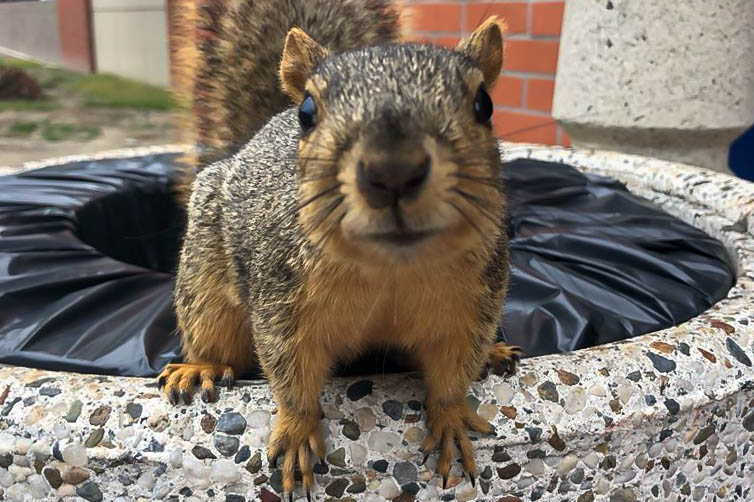The sight of a bushy-tailed fox squirrel munching on some discarded chow mein from the Panda Express in the University Dining Plaza was not an uncommon happening at Long Beach State.
That is, until the coronavirus pandemic forced students, faculty and staff to go home, leaving the 322-acre campus practically empty.
As students and faculty have had to adapt to a fully virtual learning environment, the campus’ famous wildlife have been going through an adaptation process of their own.
Ted Stankowich, associate professor of biological sciences, said that a lack of humans on campus has led to changes in animal behavior.
“In general we think the wildlife is reverting to becoming more wary of humans. I had a couple of M.S. [mammal sciences] students do some approaches toward the squirrels on campus, and they seem less approachable than they were before,” Stankowich said. “This will change, of course, once students return, but for now, they aren’t having thousands of innocuous interactions with walking humans anymore. Anyone that is walking toward them would be unusual and reason to be alarmed.”
Squirrels, CSULB’s unofficial furry mascot, have made quite the name for themselves on campus. Known for their cheeky personalities, the small mammals practically ran the campus and have been known to even heckle students for snacks.
Without an expansive menu provided from students discarding their trash after eating at the UDP or Starbucks, squirrels and other animals on campus have had to turn toward more traditional means of food gathering.
“They’re foraging for themselves these days,” Stankowich said. “So I imagine that the squirrels aren’t nearly as well fed as they were before.”
When the campus first made its transition to alternative teaching methods in March, Stankowich and his students in the CSULB Mammal Lab said they were seeing more visible wildlife. After months of little-to-no contact with humans, Stankowich said, a change in actual population size has yet to be determined.
With the spring 2021 semester slated to continue with mainly virtual instruction, it can be expected that the animal population on campus will continue to behave as they have been. However, as students and faculty are anticipating a return come fall 2021, Stankowich said the transition will be an easy one.
“Fewer people means that wildlife will dishabituate to humans, meaning that they should become more wary and less approachable,” Stankowich said. “My guess is that once students return that they will quickly revert back to their old ways again. Any individual [squirrels] that were on campus when it was populated would be able to quickly revert, while youngsters that were born without people around may take more time.”




